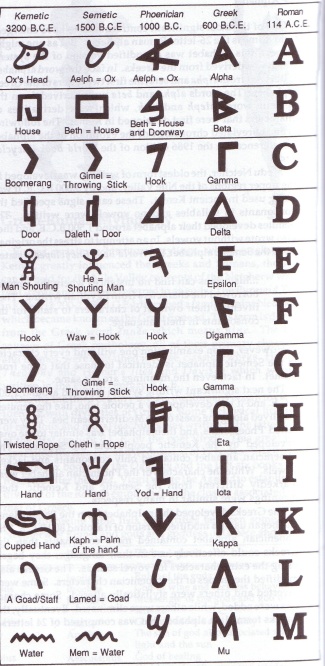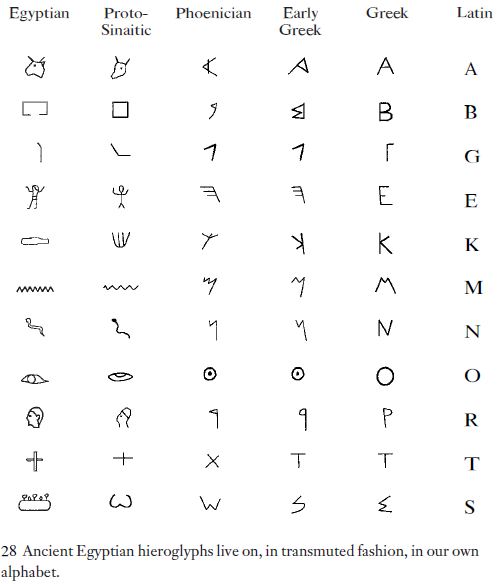|
|
|


Les tableaux
ci-dessus sont tirés des pages 170 & 171 du livre:
"Nile Valley Contributions to Civilization" (Anthony
Browder)

This chart is taken from Steven Roger Fischer book
"A History of Writing" p.48.
On th eprevious page, Fisher wrote :
"Egyptian writing influenced the Meroïtic script of Meroë in the Sudan, dating from c. 250 BC, and also supplied the forms for the earliest identified consonantal alphabet (c. 2200 BC) that generated the various Semitic proto-alphabets of the Sinai and Levant. The latter became, in time, the Latin alphabet we use today.
The world’s debt to the Nile is immense. It is no coincidence that our method of writing at the beginning of the third millennium AD is not too different from that of Egyptian scribes of the third millennium BC.12 Though the idea of complete writing may have arisen in Sumer, the way we write and even some of our signs, which we call ‘letters’, are the ultimate descendants of ancient Egyptian founders (illus. 28).
Wikipedia has the following page about Fisher :
"Steven Roger Fischer (born 1947) is a New Zealand linguist. He is the former Director of the Institute of Polynesian Languages and Literatures in Auckland, New Zealand. Fischer is the author of more than 150 books and articles on linguistics, many of which are commonly cited. For his contributions to the decipherment of ancient scripts, Fischer was elected a Fellow of the Royal Society of New Zealand in 2010."

This chart is from the article "How the Alphabet Was Born from Hieroglyphs" by Orly Goldwasser (Biblical Archaeology Review 36/2 March/April. Award: "Best of BAR" award for 2009-2010).
The Hebrew University of Jerusalem states that Prof. Orly Goldwasser is:
Head of the department of Egyptology, Ancient Near Eastern Languages and Cultures.
Full Professor at the Institute of Archaeology. Egyptologist - researcher of Ancient Egypt, Honorary professor at Göttingen University, Germany.
|
|

